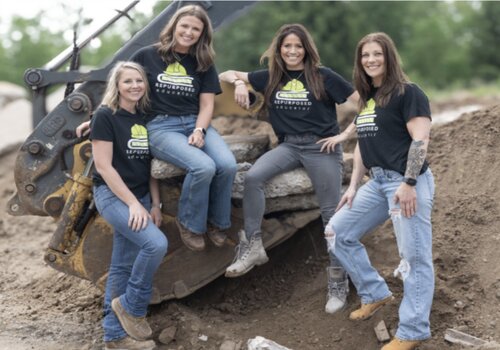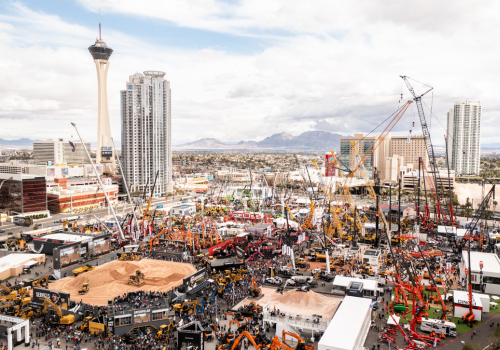Mental health has been a taboo topic—especially for men and especially construction workers. That stigma has decreased a bit over recent years, thanks to efforts put in particularly by Millennials and Gen Z.
Then, COVID-19 crumbled whatever was left of that wall we tried to build between mental health from physical health. The world was stuck at home and a lot of people lost their jobs, but everyone learned pretty quickly how fear and isolation can affect a human being.
And that’s not even considering the COVID-19 symptoms that people suffered and some are still battling.
It was finally common to hear mental and physical health talked about as one kind of health: overall well-being.
The construction industry was no exception. People who were used to working with other people in-person on job sites every day were suddenly ripped from that environment. In an industry with staggering substance use disorder and suicide rates, isolation took a serious toll.
But in the problem also lies the silver lining: people started talking to one another. We got on ZOOM and had digital hang outs with friends. More medical providers opened telehealth appointment options, including psychologists and psychiatrists. If people still had healthcare insurance and a working internet connection, they could find help.
So, we discovered that we need help. We need connection—all of us.
In that need came a demand to redefine safety. Safety needs to include not only physical and mental health, but also social health. Managers and supervisors needed to learn how to connect with their workers and how to help their workers connect with one another.
Gathering Data
When people start talking openly and honestly, researchers can collect data. And data is what we received.
“We can thank every Generation Z, Millennial, some progressive boomers, and some really progressive Generation X to help us with this journey,” says Kim MacDonald, with 13 FACTORS.
“We also have in the research that younger people don't access mental health services as much,” MacDonald says. “So, we've got much more awareness and openness but sometimes they are not accessing mental health services. We need to continue on helping people understand that your mental health is on a continuum, just like your physical health.”
People are getting the message thanks to organizations like 13 FACTORS. 13 FACTORS is built on psychosocial health, which is more aligned with risk and hazard management than it sounds.
“Psychosocial health and safety is a systematic organization-focused approach to managing all the risk and hazards embedded in the workplace in all its forms,” MacDonald says, “from the way work is done to looking at remote work, the features and characteristics around that job design and some of the interpersonal relationships within the workplace.”
Psychosocial health and safety takes everything a person needs into consideration to provide a healthy and safe workplace.
13 Risk Factors
The organization’s name references the 13 risk factors to psychosocial health and safety in the workplace. (There are technically 14 risk factors, but the 14th one is basically like a subset of the 13th factor.) They are:
- Organizational Culture
- Psychological and Social Support
- Clear Leadership & Expectations
- Civility & Respect
- Psychological Demands
- Growth & Development
- Recognition & Reward
- Involvement & Influence
- Workload Management
- Engagement
- Balance
- Psychological Protection
- Protection of Physical Safety
+ Any other chronic stressor that may be identified by workers.
These were determined based on the National Standard of Canada for Psychological Health and Safety in the Workplace (the Standard) by the Mental Health Commission of Canada (MHCC).
These factors take a holistic view of a person’s needs: physical, mental and social well-being. When all these factors are considered, an entire human being is supported and they carry this support throughout other aspects of life.
As much as we’ve been told to leave our problems at the door, the truth is that isn’t how people function. So rather than trying to separate a person into parts and caring for only the “work part,” this approach supports the entire human.
Why the Focus on Management?
Pick a random person, the person next to you in line at the grocery store, and they probably have a story about a bad experience with a supervisor or manager. Those experiences stick with us because those people are important to us.
“We know that your immediate supervisor has a bigger, stronger and more powerful impact on your mental health, than your faith leader or even your physician, and equal to your partners,” MacDonald explains.
“So, they have an incredibly important job, which is why that dollar has to go to their development and it's their whole human development. It’s not [only] about using this tool. It's about them understanding themselves and people in context.”
Time to Play
Of course, this kind of organizational overhaul doesn’t happen overnight.
“In construction, there are a lot of factors in the work conditions that we know it's going to take a lot of work because it is a shift to look at the way work is done, and that's a huge rock for construction,” MacDonald says.
The good news is the path forward for organizations is like what humans need: play.
“We’re essentially bigger babies,” MacDonald jokes, because adults need room to play—to be curious and experience new things. And when a person is supported, they can be more engaged with their work. Then, problems and challenges become new experiences where a person learns something new and grows.
Similarly, the construction industry will need to play with incorporating psychosocial health and safety to see how it works. It’s applying the scientific method in real-world situations where organizations see how the work has to be applied in order to truly care for its workers—and reap the benefits of a holistically healthy workforce.
It’s time to experiment, or in other words, it’s time to play.
Click here to learn more about how physical, social and mental health are connected.
Photo credit: SHUTTERSTOCK.COM/ADRIATICFOTO












